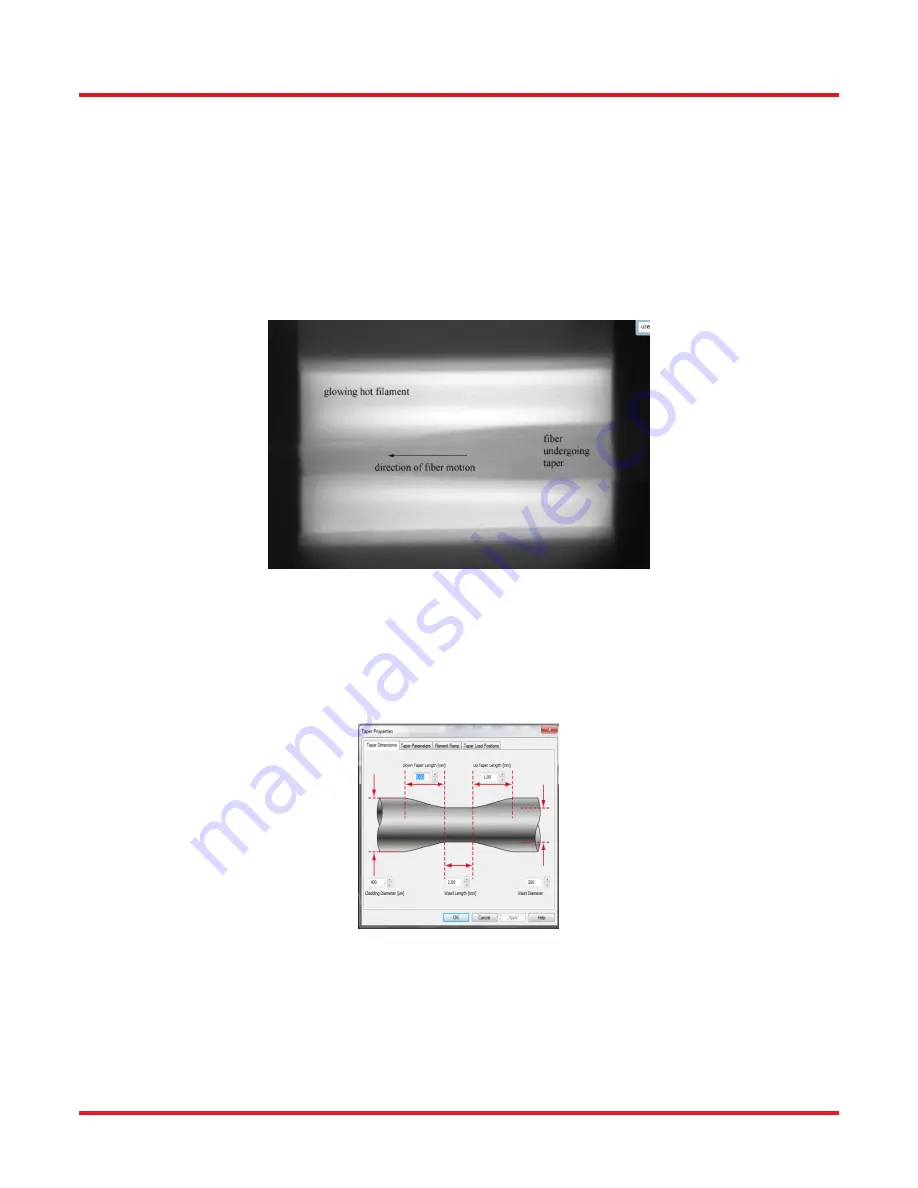
GPX3800 and GPX3850 Glass Processors
Chapter 5: Operation
Page 34
TTN047534-D02
5.7.2. Manual Alignment
The GPX3800 and GPX3850 workstations offer the operator the ability to perform manual splices where the
alignment is carried out by the operator viewing the fibers on the screen and making the appropriate motor
movements, or via a semi-automatic process where operator selects individual processes from the tool bar.
Manual alignment is particularly useful when developing new process routines.
5.7.3. Drawing Tapers
A fiber may be tapered by heating it to its softening point and applying a tensile force. As the fiber elongates, its
cross sectional area will be reduced accordingly. A taper is created by passing the fiber through the filament while
pulling on it with the fiber holding blocks at different velocities. This process is illustrated below in Figure 14.
Figure 14
Image of Taper in Progress
5.7.4. Taper Properties
The user can precisely define the taper created using the Taper Properties window, which is shown below. It is
accessed by opening the “Splice” menu and then clicking on “Taper Parameters.”
The first tab in this window (shown in Figure 15) lets the user determine the geometry of the taper. The following
are some brief notes regarding taper terminology.
Figure 15
Taper Dimensions Interface
When the glass processor first starts stretching the fiber and tapering it down, it creates what is referred to in this
document as the “down taper.” When the fiber has been tapered down to a certain diameter, the workstation then
maintains an unchanging rate of stretching so that a length of the fiber will have a region with the reduced, but
constant, diameter. This region is referred to as the “waist” of the fiber. After the waist has been created, the glass
processor diminishes the pulling force on the fiber until finally it is no longer stretching it at all. This creates what is
called the “up taper.”






























